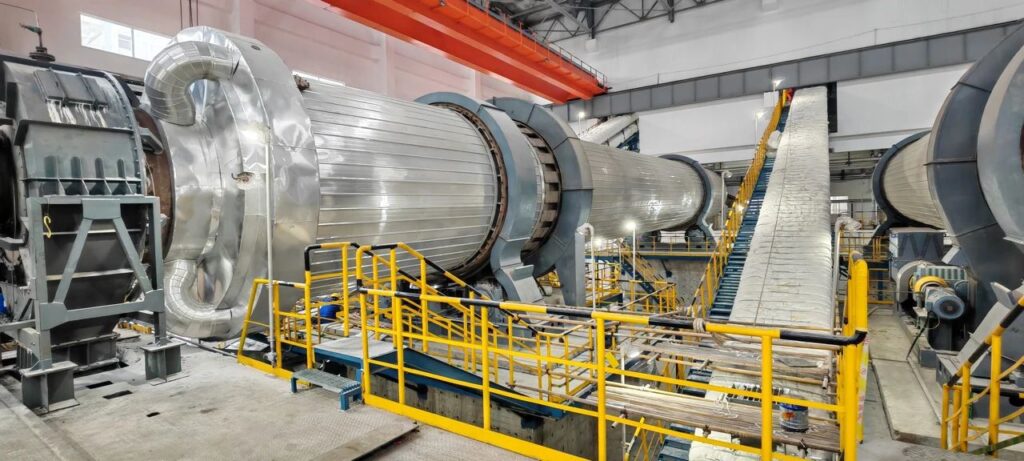
In the grand territory of the chemical industry, Soda Ash Light factories, as key production nodes, always face the dual proposition of environmental protection and development. How to minimize the impact of production activities on the ecological environment while ensuring product quality? This is not only a core challenge for the sustainable development of enterprises, but also a key issue that the entire industry needs to make breakthroughs. Today, we will enter an industry benchmark sodium carbonate factory to deeply decode its successful practice of green transformation.
1.Wastewater circulation: Building a zero – emission closed – loop ecology
In the past, wastewater discharge has always been a “stubborn disease” that is difficult to cure by Light Soda Ash production. Today, this factory has successfully achieved a breakthrough in zero wastewater emissions through a refined wastewater management system. In the production process of coalescing, the cleaning water of each equipment is no longer directly discharged, but is cleverly used for washing with mother liquor. The washed water body returns to the mother liquor system to form an efficient internal circulation. The filter cake washing water and furnace gas condensate are also fully utilized as a supplementary water source for the mother liquor system.
For the wastewater generated by the comprehensive exhaust gas scrubber, the factory uses the ammonia vaporization process to process it. The treated ammonia vaporization kettle liquid can be recycled as water for the comprehensive exhaust gas scrubber and mother liquor absorption tower. Through such an interlocking circulation system, the factory “eats dry and squeezes out” every drop of wastewater, completely cutting off the source of wastewater pollution.
2. Waste gas treatment: multi-dimensional purification combination strategy
Waste gas treatment is the core battlefield for environmental protection in Soda Ash Lite factories. Faced with waste gas of different sources and natures, the factory has formulated a systematic and multi – level governance plan. After the carbonized exhaust gas, alkali – making tower exhaust gas, etc. are collected through the pipeline, they are first entered into the comprehensive exhaust gas scrubber, and are initially washed with waste liquid, and then entered the 2# environmentally friendly scrubber. After deep purification of concentrated sulfuric acid, they are finally discharged from the 30 – meter – high 1# exhaust cylinder.
For the mother I barrel breathing air, vacuum exhaust gas with filter, etc., the factory has also designed corresponding exclusive purification processes to ensure that each exhaust gas is strictly processed. In the Soda Ash Dense Incineration process, the furnace gas generated is first cyclone dust removal through the furnace gas separator, and then finely filtered by a bag dust collector to control the alkali dust content to an extremely low level. The waste gas generated from salt ports, packaging and other links are also discharged after collection and washing, protecting the quality of the atmospheric environment in all aspects.
Treatment methods for various types of exhaust gases:
| Waste gas source | Collection method | Treatment process | Final emission method |
| Carbonized exhaust gas, alkali-making tower exhaust gas | pipeline collection | Comprehensive exhaust gas scrubber (waste liquid washing) →No. 2 Environmentally friendly scrubber (concentrated sulfuric acid washing) | No. 1 Exhaust cylinder (H = 30m) |
| Mother Ⅰ Bucket breathing, etc. | Pipe collection | No. 2 Environmentally friendly scrubber (concentrated sulfuric acid washing) | No. 1 Exhaust cylinder (H = 30m) |
| Vacuum exhaust gas with filter | Pipe collection | No. 1 Environmentally friendly scrubber (concentrated sulfuric acid washing) | No. 2 Exhaust cylinder (H = 25m) |
| Exhaust gas from alkali tank, etc. | Suction hood, pipeline collection | No. 3 Environmentally friendly scrubber (concentrated sulfuric acid washing) | No. 3 Exhaust cylinder (H = 20m) |
| Soda Ash Dense furnace gas during calcine | / | furnace gas separator (cyclone dust removal) → bag dust collector | No. 8 exhaust cylinder (H = 28m) |
| Add salt outlet exhaust gas, packaging exhaust gas | suction hood, pipeline collection | No. 4 Environmentally friendly scrubber (concentrated sulfuric acid washing) | No. 4 exhaust cylinder (H = 30m) |
3. Solid Waste Regeneration: Value Regeneration of Circular Economy
In the field of solid waste treatment, the factory practices the concept of circular economy and converts waste into available resources. The ammonium sulfate produced during the production process is transported to the company’s thermal power station, and after processing and producing solid ammonium sulfate products that meet national standards, it is then put into the compound fertilizer device as raw materials, achieving a gorgeous turn from solid waste to high – value products. The original ammonia mud in the factory also enters the compound fertilizer production line through the same path. This “turning waste into treasure” model not only completely eliminates the problems of land occupation and environmental pollution caused by solid waste stacking, but also opens up new economic growth points for enterprises.
Industrial Chain Flow Chart
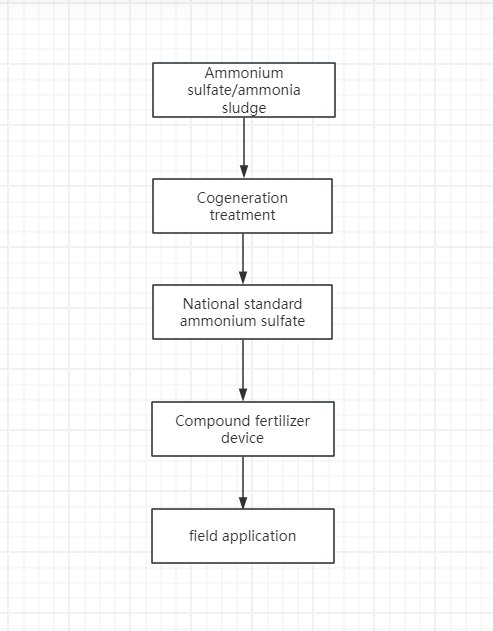
4. Noise reduction action: Create a silent production space
In order to reduce the impact of production noise on the surrounding environment and employee health, the factory carried out noise reduction projects from multiple dimensions. In terms of equipment layout, high – noise equipment is centrally arranged and professional sound insulation facilities are installed; during the equipment selection stage, low – noise equipment is preferred to reduce noise generation from the source. At the same time, the factory carried out sound insulation transformation of workshop buildings and installed high – efficiency sound insulation materials in walls, doors and windows. In addition, the plant area has vigorously promoted greening projects, forming a natural sound insulation barrier by planting tall trees and shrubs. After the implementation of a series of measures, the noise level around the factory has dropped significantly, meeting environmental protection standards, creating a more comfortable working environment for employees.
Factory photo example
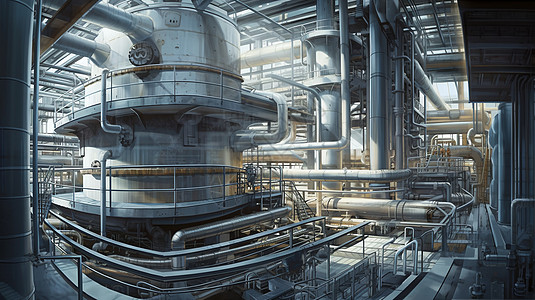
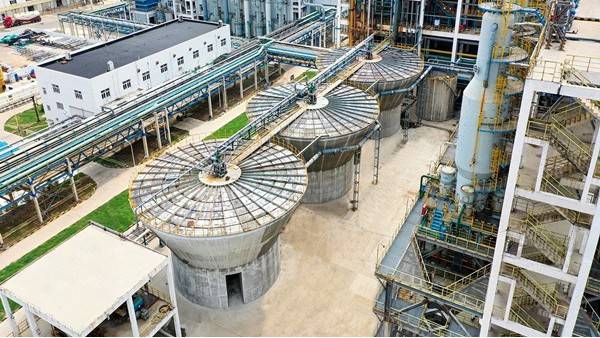
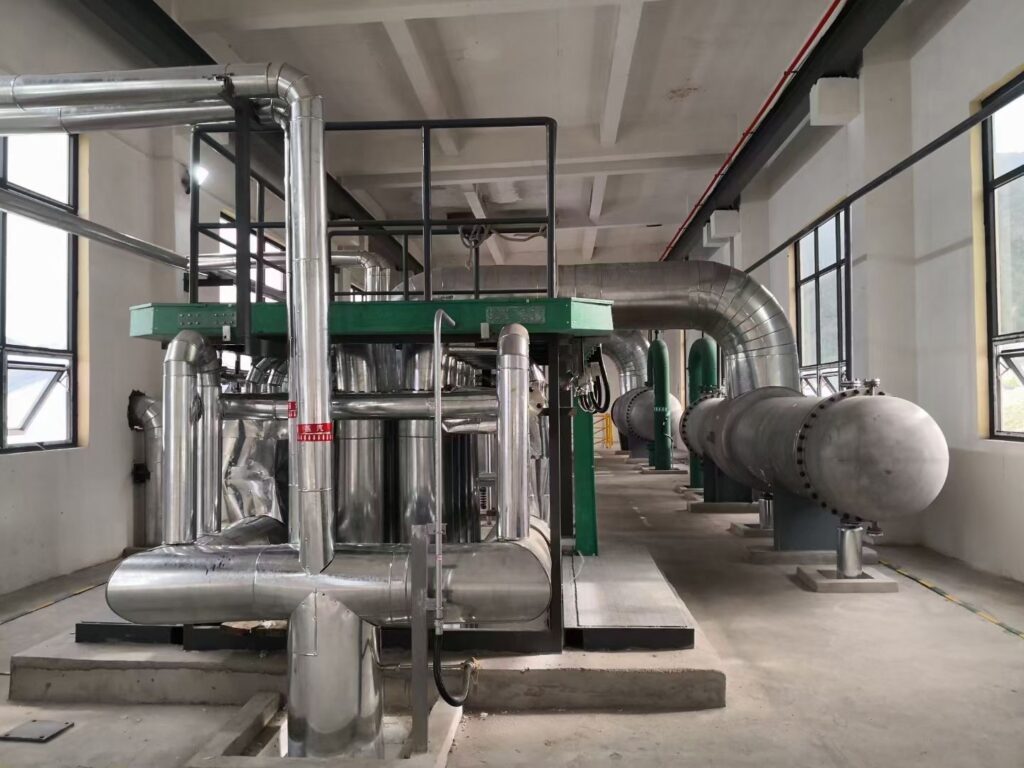
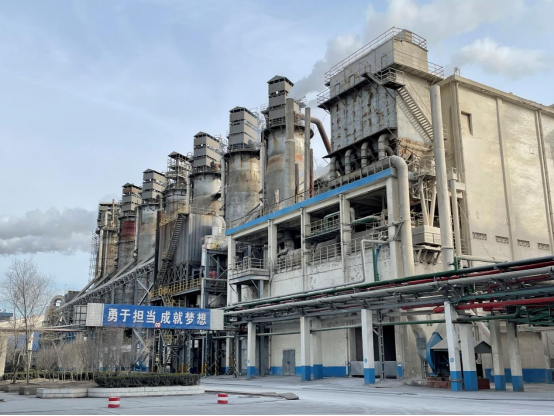
Through continuous innovation and practice in wastewater, waste gas, solid waste and noise management, this Soda Light Ash factory has successfully achieved the transformation from a traditional chemical company to a green factory. Its experience not only provides replicate and popularize environmental governance solutions for the same industry, but also demonstrates the responsibility of chemical enterprises in the construction of ecological civilization. With the emergence of more and more green factories, the chemical industry will surely move towards a more sustainable future in the coordinated progress of economic development and environmental protection.
